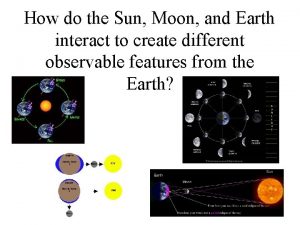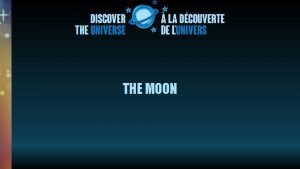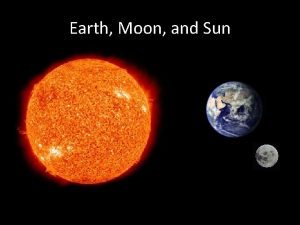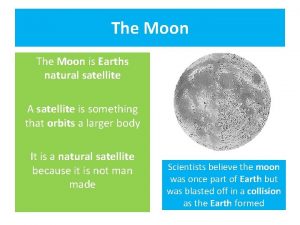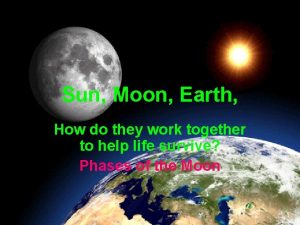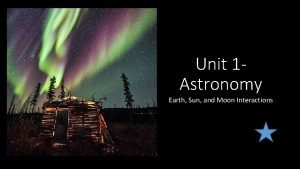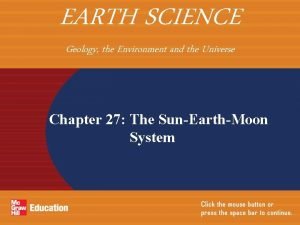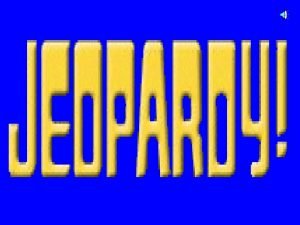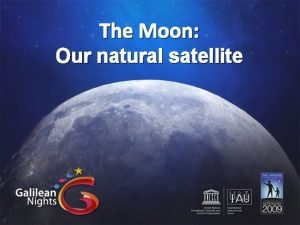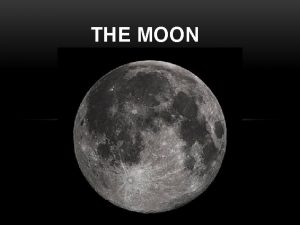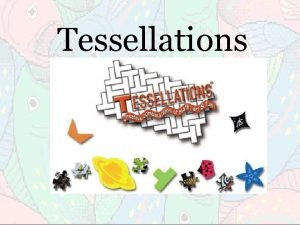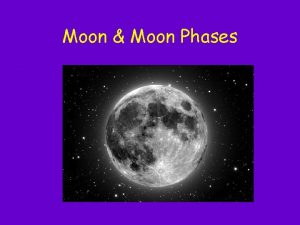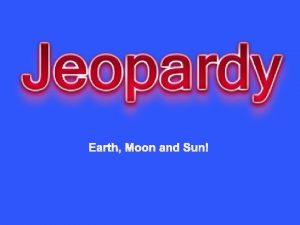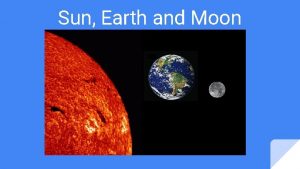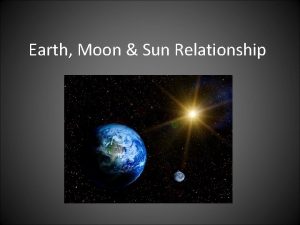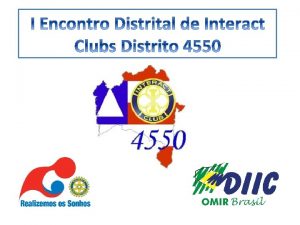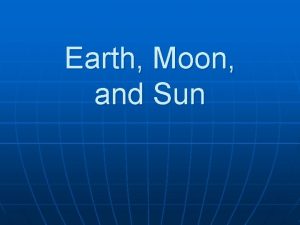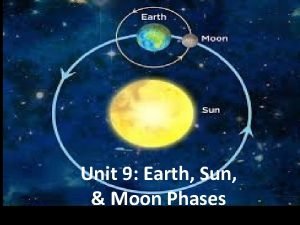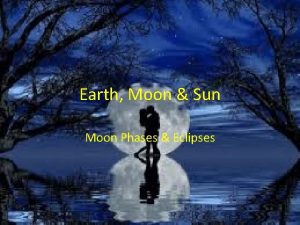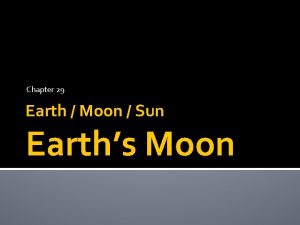How do the Sun Moon and Earth interact
















- Slides: 16

How do the Sun, Moon, and Earth interact to create different observable features from the Earth? 1

Seasons

Seasons Look at this diagram. Notice how the Earth is always tilted in the same direction. As the Earth , the part of revolves Earth tilted toward the sun changes.

During what seasons is the North Pole tilted towards the sun? Why? summer

During what seasons it the North Pole pointing away from the sun? Explain. winter

How do tides change from high tide to low tide? • Two big bulges of water form on the Earth: – one directly under the moon – another on the exact opposite side As the Earth spins, the bulges follow the moon.

Gravitational Effect of the Sun • Neap Tides – Earth, Moon, and Sun form right angles – High Tides are lower and Low Tides are higher than normal • Spring Tides – Earth, Moon, and Sun are lined up – High Tides are higher and Low Tides are lower than normal

Solar Eclipses How do Eclipses differ from Phases of the moon? • When the Moon’s shadow covers part of the Earth • Only happens at New Moon

Here is an animation showing a total solar eclipse

10

This is an animation showing a total lunar eclipse from start to finish.

Using a diagram of the Earth, Moon, and Sun, how can you determine the phase of the moon? The moon looks different throughout the month. Sketch a diagram of the Earth, Moon, and Sun that demonstrates how these phases occur. Next, we will test these diagrams.

Phases - Causes When the sunlight reflects off the Moon’s far side, we call it a New Moon When the sunlight reflects off on the Moon’s near side, we call it a Full Moon Between New and Full, we see parts of the daytime side of the Moon.



1. Caleb’s class is studying the Earth/Sun/Moon system. He studies the diagram of Earth and the sun shown below. Which season is the northern hemisphere experiencing when Earth and sun are in these positions? A fall B winter C spring D summer 2. Maxine’s class is studying the Earth/Sun/Moon system. She studies the illustration of the moon, sun, and Earth shown below. At which stage is a solar eclipse possible? A 1 B 2 C 3 D 4
 How do the sun moon and earth interact
How do the sun moon and earth interact When the sun passes between the moon and earth
When the sun passes between the moon and earth How does the moon earth and sun work together
How does the moon earth and sun work together Diagram of earth moon and sun
Diagram of earth moon and sun New moon position of sun and earth
New moon position of sun and earth Sun moon earth relationship
Sun moon earth relationship How does the sun moon and earth work together
How does the sun moon and earth work together Oblate sheroid
Oblate sheroid The sun-earth-moon system worksheet answers lesson 1
The sun-earth-moon system worksheet answers lesson 1 Earth moon
Earth moon Geosphere and biosphere interactions
Geosphere and biosphere interactions The science duo
The science duo Which moon phase occurs directly before a new moon
Which moon phase occurs directly before a new moon Moon sister moon calendar
Moon sister moon calendar Home.hiwaay.net/ krcool/astro/moon/moon tides/
Home.hiwaay.net/ krcool/astro/moon/moon tides/ How many days for a moon cycle
How many days for a moon cycle Spider web tessellation
Spider web tessellation
